

Site © 2010 TMDA. Club site updated: 11/9/2015 by Melvyn Hepple, Webmaster, Images by kind permission of copyright holders.
Email: melx@tmda.co.uk for details of individual images.


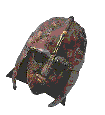
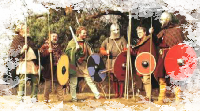
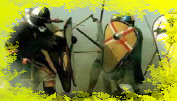
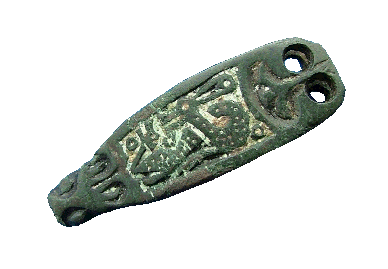
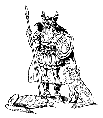

An Anglo-Saxon Strap-end from Wooperton
Professor Richard N. Bailey.
Northumberland and Durham have produced very little decorated Anglo-Saxon metalwork of the ninth century. A gold ring found between Hexham and Corbridge, two strap-ends from excavations at Bamburgh and a further unpublished strap-end found on Lindisfarne in 1986 probably gives the complete tally (Bailey 1974; Webster et al 1991, no. 195). This paucity of finds is even more remarkable given the extensive excavations at Monkwearmouth and Jarrow by Professor Cramp and the numerous discoveries of the ninth-century coinage in the area (Pirie 1986). The contrast with the position further south in Yorkshire, with sites like Whitby, York, Cottam and Cowlam yielding large quantities of such material, is very marked (Peers and Radford 1943; Waterman 1959; Haldenby 1990-1992). The discovery by a metal detector of a highly decorated strap-end. What makes this find of even greater significance, however, is that its appearance provoked the first identification of a distinctive workshop active in the production of this form of object. I am very grateful to the finder and owner, Mr. Melvyn Hepple for permission to publish this important piece here, to Sandra Hooper for supplying the drawing and Lindsay Allison-Jones for alerting me to the discovery.
Description
The object is a bronze, 3.7cm long, and consists of a bow-sided plate whose butt-end
is split to fit around the end of a band, belt or ribbon, some of the larger strap-ends,
such as those from Bamburgh, may have attached to leather but the relative delicacy
of the Wooperton example suggests that it was fixed to some form of textile. The
two rivet holes which secured the piece is not quite level with each other, the left
hole being slightly lower than the right. These rivet holes flank a stylised palette
motif in which two curling leaves enclose a split bud. At the bottom of the plate
is a stylised animal mask, the eyes formed by two small bosses, with rounded, horseshoe-shaped
ears above. The single panel carries zoomorphic ornament whose arrangement is fraught
with ambiguity.
More information can be obtained from { IV a Anglo-Saxon Strap-end
from Wooperton by Professor Richard N. Bailey}.
{ARCHAEOLOGIA AELIANA Fifth Series,
Volume XXI}.






